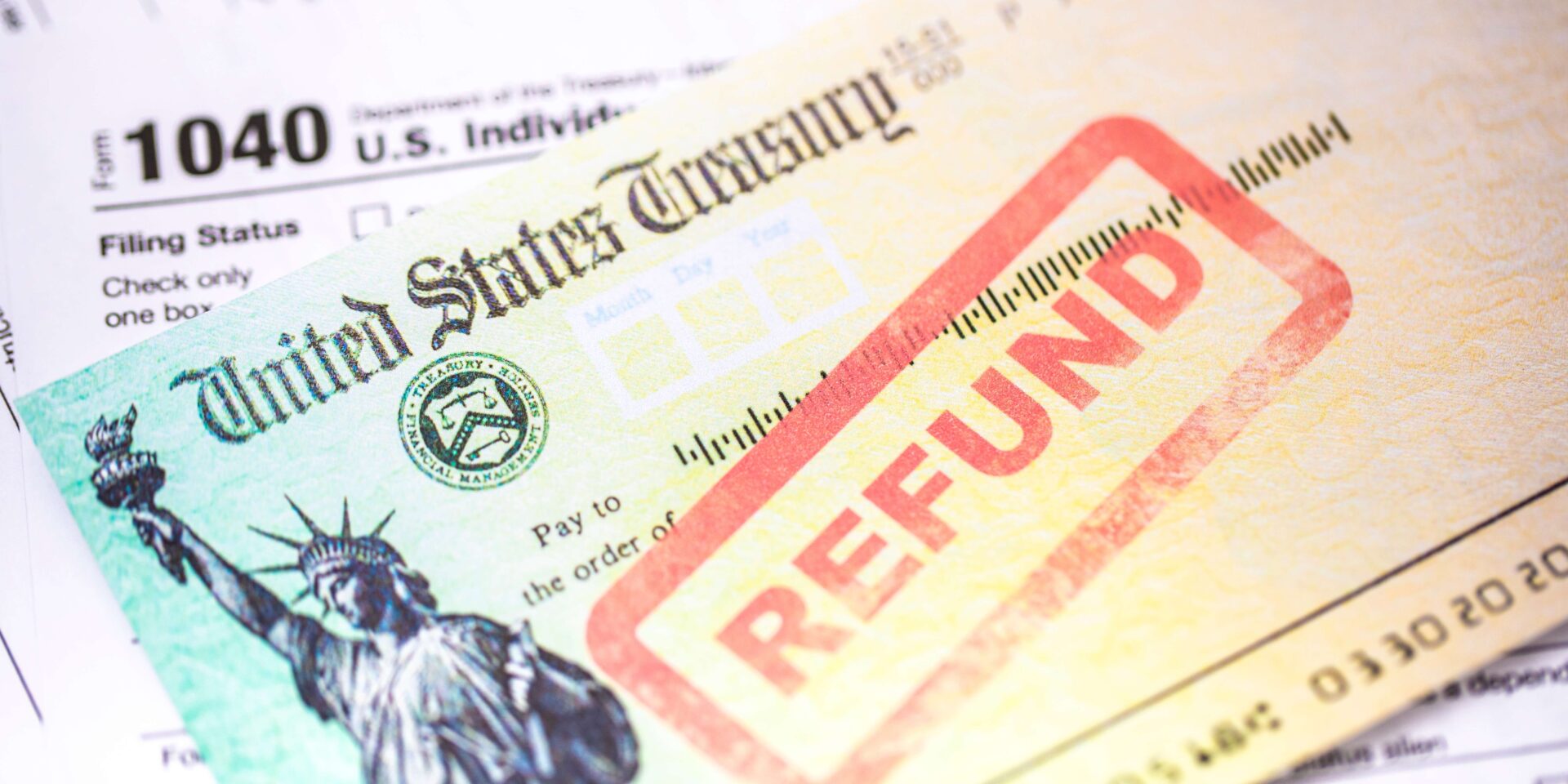
If your business loses money, it’s undeniably a bad financial year. You may find yourself wondering, “Will I get a refund if my business loses money?” The only silver lining is that, in most cases, you can get a refund of estimated taxes if your business has a net loss. Like all other taxpayers, if a business has paid more taxes than was due on its return, the business could be eligible for a refund.
Read on to understand how business refunds work and under what circumstances you may be eligible for a business tax refund.
What Is a Business Loss?
A business loss is a situation that any business may face when expenses exceed income in a given year or accounting period. The loss means that even if the company earned significant revenue, the expenses or losses surpassed the income. Thus, the business’s net income for the period was a loss.
How Does Getting a Refund on Your Business Loss Work?
If you open a company in the US, you’ll have to pay business taxes. Getting a refund is possible if your business loses money. However, if your business has what is classified as an extraordinary loss, you could even get a refund for all or part of your tax liabilities from the previous year. Or, in the case of limited losses, you may be able to carry the loss forward into subsequent tax years.
In most cases, you should receive the refund within 90 days of filing. After receiving the refund, you will need to make an accounting entry to note the income tax refund. Which forms you need to file with the IRS depends on the type of business structure.
In addition, there were COVID-19 rules for claiming a loss on taxes, and while the pandemic is over, you may still qualify for deductions for losses due to casualties and theft.
Here is how to make the filings for business losses based on business type.
Sole Proprietorship
If you started a business without an LLC and work as a sole proprietor or have a single-member LLC, you qualify as a sole proprietor, according to the IRS. In that case, to claim a refund on business losses, you must file Schedule C to report income and expenses with your Form 1040. A Schedule C loss from your business can offset other income reported on your personal income tax return.
In case you paid estimated taxes equal to more than the final taxes owed, you are eligible for a refund. You will be asked for your bank account information, as the IRS directly deposits tax refund payments into a financial account.
Partnership
If you have a partnership or a partnership limited liability company, each partner will also file Schedule C to report business income and expenses with their Form 1040. Schedule C loss reported by each partner can offset income on their personal tax return. Then, each partner may be eligible for a refund based on the total taxes already paid and final taxes due based on total income.
LLC
If you have an LLC, you could be eligible for LLC tax benefits. If the LLC is a single-member LLC, it is treated as a sole proprietorship for tax purposes. Two-member limited liability companies are treated as partnerships for tax purposes. The instructions for those cases are above.
In the case of a multi-member LLC, the LLC must file Form 1065, Return for Partnership Income. You may also report LLC losses on your personal tax return if you have a sufficient basis in your LLC ownership interest. In that case, after deducting relevant business losses from total income, you may be eligible for a refund if you have already paid more than the total taxes due.
Learn more about filing LLC taxes with personal taxes or how to file LLC taxes with no income. Need more info? Get a complete beginner’s guide on how LLCs are taxed here.
Corporation
S-corporations and C-corporation business losses are treated differently. If you have elected to have the LLC treated as an S-corporation, the LLC must report business income and losses on Form 1120-S.
Income and losses are passed through to shareholders of S corporations and reported on their individual income tax returns. You may claim S-corporation losses on your personal income tax return if you have a sufficient basis for your ownership interest. If those losses result in you having overpaid estimated taxes, you could be eligible for a refund of the difference.
C-corporations or LLCs that elected to be taxed as a C-corporation cannot pay through business losses to individual shareholders. C-corporations are treated as separate business entities and must report business income and losses on Form 1120. You can’t report business losses on your individual income tax return.
What Is a Net Operating Loss (NOL)?
A net operating loss or NOL is a situation where expenses exceed revenue. A net operating loss occurs when tax-deductible business expenses exceed annual revenue for accounting purposes. Alternatively, an NOL may occur during any accounting period when the business operates at a loss after accounting for all expenses and income.
What Are the Limitations on Business Loss Deductions?
There are limitations on both capital losses and business losses. For business loss deductions, you can take a loss up to $262,000 as an individual or $524,000 for a joint tax return. If the business exceeds the loss limits, it may be carried forward into subsequent tax years.
For capital losses, if you don’t have capital gains to offset the loss, you may deduct capital loss to offset ordinary income. The limit for capital losses is up to $3,000 per year. If the business has over $3,000 in capital losses, it can be carried forward to future tax years.
How to Carry Over Business Losses?
The company has a net operating loss if your expenses exceed income. If you file as a sole proprietor or a partnership, you can use IRS Form 461 to calculate limitations on business losses and report them on your individual income tax return. The form asks for information about your total income and expenses and then compares the excess loss limits to see if your losses will be limited.
Generally, if your company exceeds the loss limit, the company can write off 80% of each subsequent year’s net income via a loss carryforward. You can find the IRS’s instructions to carry forward losses based on the first year of loss. For example, if a company loses $3 million in one year and reports an excess loss, then earns $7 million the next year, it can carry over the loss to that year.
Save Time Filing Taxes this Year
Correctly calculating business expenses and deductions requires excellent bookkeeping throughout the year. It can not only save you time but also ensure you correctly calculate and claim allowed refunds. You’ll need to keep careful records of all receipts and track allowed deductions. doola bookkeeping services can help with bookkeeping and invoicing for businesses. It is designed for busy founders to help businesses of all sizes streamline bookkeeping and file taxes easily. Ready to get started? Get doola Books here!
FAQs
What documentation or evidence is required to request a refund for financial losses?
To request a refund for financial losses, you will need receipts, expense ledgers, and/or mileage logs to document all business losses. Clear record-keeping and accounting are essential when filing a business loss.
What is the timeframe for requesting a refund for financial losses?
According to the IRS, you have three years from the date you filed your federal income tax return to claim a refund or a credit. If you provided your bank account information while filing electronically, you will usually receive a refund within 90 days.
Can I request a refund for financial losses if I have a contract?
If you have an employee contract, whether you can request a refund for financial losses depends on the nature of the losses. If they were valid business expenses, even if it’s a side hustle, you can usually report those losses against income.
Is there a difference between refunds for financial losses and refunds for dissatisfaction with a product or service?
The difference between refunds for business losses filed correctly with the IRS and a refund from a company for a poor-quality product or service is significant. In the first case, a tax refund from the IRS is related to ordinary and necessary business expenses for a legitimate business. In the second case, you may request a refund from any company that fails to deliver the promised goods or services.
How can I prevent financial losses in my business?
You must take proactive steps to ensure strong cash flow to prevent financial losses in your business. Strong HR for employee satisfaction, advertising to capture a greater market share, and an in-depth understanding of your target market’s needs and how you can fulfill them, can all help a business succeed. In addition, strong accounting, auditing, and financial controls can help a business manage cash flow and allocate resources.




